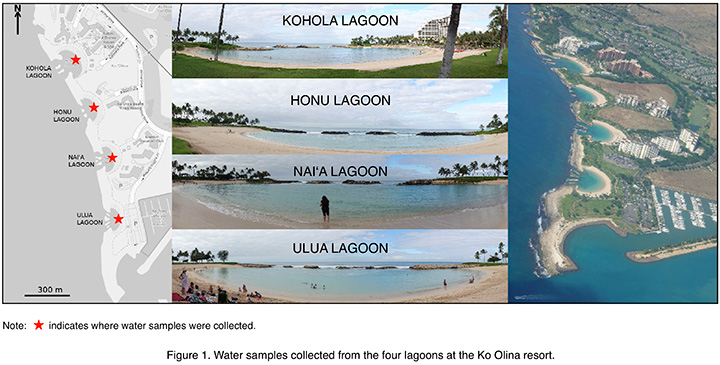
SPONSOR:
Hawai‘i State Department of Health
PROJECT PERIOD:
10/01/2018 – 09/30/2019
ABSTRACT:
The Ko Olina Resort lagoons are extremely popular for recreational activities; however, they have not been extensively monitored for water quality. The objective of this study is to address this lack of water quality information by examining and evaluating the lagoons’ microbiological water quality over a one-year period. In 2019, 128 water samples were collected from the four lagoons (Kohola, Honu, Nai‘a, and Ulua). The results indicated generally good water quality as (1) enterococci were not detected in a large proportion of the samples, and (2) only one sample exceeded the Hawai‘i Beach Action Value for enterococcus concentrations. In addition, no human-associated Bacteroides marker was detected in this sample, nor were Clostridium perfringens concentrations elevated, which suggested the source was not human fecal matter. Brown water found in late August were due to the growth of a dinoflagellate, tentatively identified as Gymnodinium. Fecal indicator bacteria (enterococci and C. perfringens) were not associated with the blooms. The saxitoxin levels were low in all four lagoons and not associated with the observed blooms, nor did it present any plausible direct risk to human health. The localized blooms were associated with elevated nitrogen levels in the lagoons. The linkage between irrigation sources, fertilizer use, and local hydrology should be further studied to more definitively determine the cause of the dinoflagellate blooms if mitigating periodic nuisance blooms in the Ko Olina lagoons is of interest.
PRINCIPAL INVESTIGATOR
